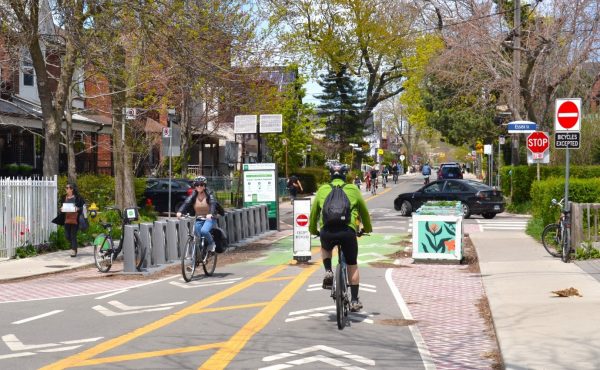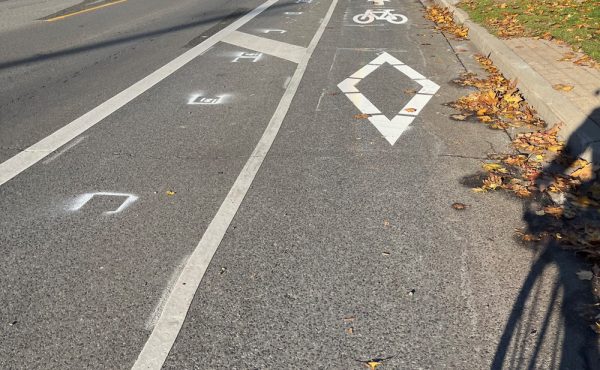It should not be considered a privilege to walk or bicycle in your neighbourhood and not get hit by a truck. It should be a basic right.
This is part of the opening voice-over from the trailer for the new documentary Contested Streets.
It’s a film intended to show New York city leaders how they can follow the example of other big cities that are successfully taming traffic. It features footage of London’s congestion charge zone, Paris’s new Bus Rapid Transit system, and Copenhagen’s network of bike and pedestrian streets (where there is a critical mass everyday!)
Copenhagen is a clear example of the old adage “build it and they will come” — although, in this case, they will ride. In Copenhagen cycling is an integral part of mainstream planning, amindset change that took place in the late 1960s. Bike paths are part of the planning for every new or rebuilt road. When will Toronto start to plan this way? If we want to maintain our reputation as one of the most “livable” cities in the world, Toronto needs to put bikes and transit first and make real efforts to reduce our automobile dependence.
The documentary is co-produced by Transportation Alternatives and Mark Gorton. It is directed, produced and edited by Brooklynite Stefan Schaefer. You can see the full list of credits here.
I found out about Contested Streets via Streetsblog — a blog about New York City’s Livable Streets movement. Their bike section is exemplary.
There are lots of cool links, including one to BikeTV…
…A cable-access show which revolves around bicycling in the NYC-metro area and beyond. Like Mulder and Scully, we’ve investigated a myriad of the bike paranormal and have determined this fact: one day bicycling will save the planet!




3 comments
I was shooting in London in january and really interested and hopeful about the London Congestion Zone concept. BUT I had a really hard time finding anybody who said that it was working; from cab and bus drivers to citizens nobody had a good thing to say. There were complaints about it’s boundries, the cost, the perception that people within the zone were driving more etc etc. Maybe I chanced upon people who were all having bad days but I wonder does anybody have any first hand knowledge about it ? sd
This film will have its Canadian premiere at the October 26 screening of Streets To Screens, the fundraising cinema series of the Toronto Public Space Committee. Everyone is invited to join us at the Bloor Cinema — tickets are $9 and full details are on our website at http://www.streetstoscreens.ca The fall season of the 2006-2007 series will launch on August 24.
I was a bit amazed when I was in New York just how much the car was king there, especially considering the extremely heavy pedestrian traffic and dense build-up of Manhattan. Most avenues had bike lanes painted on them but often taxis would drive in the bike lanes. There was little to no bike parking, which is extremely important in a city where most people live in cramped appartments that they have absolutely no space to store a bike. This despite the removal of parking meters and their replacement with similar solar ticket printers as Toronto, the old meters were simply sodded off. When I returned to Toronto the first thing I noticed was how many more bikes there were in this city.